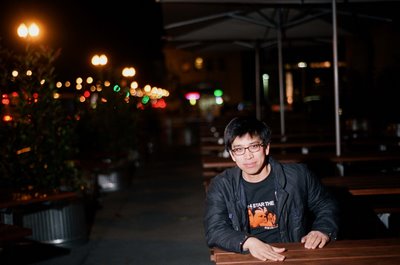

it’s been roughly six years since i first saw hiroshi teshigahara’s ‘woman in the dunes’ (1964). and it was probably the 123 minute u.s. version at the pacific film archive’s underwhelmingly dinky screen. recently, san francisco’s castro theatre screened teshigahara’s most acclaimed feature film in a 147 minute new print circulated by janus films. ‘woman’ looked magnificent on the castro’s screen, which is easily 45 ft. high. seeing cinematographer hirosi segawa’s beautifully composed close-ups and long-shots, which were designed for graphic impact by being shot as a square film frame, was truly heightened to maximum effect on that huge screen. a good comparison between the pfa and castro’s screens would be the size differences of the photos in this analysis (click any six of the images to see the startling size differences). holy moley, was i elated revisting ‘woman’ and coming away with a more nuanced viewing experience and deeper understanding and interpretation. happy to say the film did not drag at all with the additional footage, unlike the superflulous ‘apocalyspe now redux’ with the original resonating strongest because it’s a leaner cut. anyways, i will not write a plot summary—interested readers can refer to wikipedia or imdb for more details and background—plus, i will inadvertently describe key developments in the story to preface my observations and insights. so, if you prefer to see the film cold to arrive at your own take, it’s probably best not to read my analysis first.

eiji okada, who is ‘lui’ in alain resnais and marguerite duras’ terrific ‘hiroshima mon amour’ (1959), plays entomological hobbyist niki jumpei, hoping to capture a rarely found variant insect species in order to fulfill the mundanely proud ambition of being cited in a travel log. also, jumpei’s vain nature is to seek recognition from anyone. the reason he was captured in the first place is due to him seeking out that rare insect so he would get his name published, and it is also his motive to escape; notice his initial attempts to escape, he always carried the insects he collected and never left them behind. by the end of the film, he decides to return to the sand pit in order to reveal his invention of the pump to the village captors who will appreciate the practical use of it. i idolize okada’s antecedental dignified asian lead performance in ‘hiroshima’ and liken it to tony leung’s chow mo-wan from ‘in the mood for love.’ although in ‘woman,’ okada portrays a pathetically self-centered character and okada’s performance is prone to occassional overexpressive acting. nonetheless, i was drawn to jumpei’s compulsive determination to escape the sand pit, despite the futility of his repeated attempts and modern civilization not offering a better option of life if his escape was finally successful. for american audiences, lucas jackson in ‘cool hand luke’ echoes the same drive and challenge to break free of imprisonment as jumpei.




